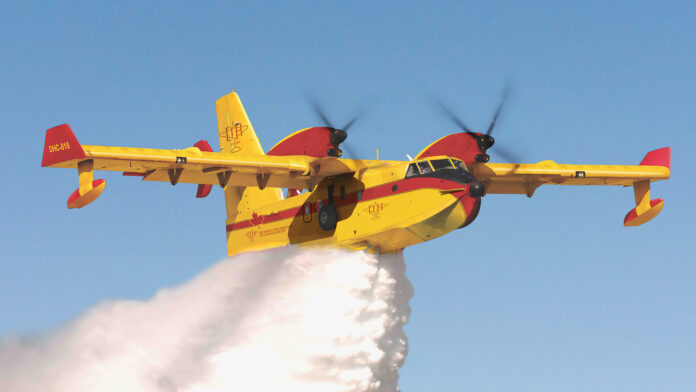The sound of more water bombers will be coming to Europe as De Havilland starts building a new fleet of aircraft on Vancouver Island.
According to vice-president of corporate affairs Neil Sweeney, 22 of the DHC 515 are in production with the parts being manufactured at De Havilland’s production facility in Greater Victoria.
He says the planes will all be bound for the European Union, who have also seen difficult wildfire seasons in the Mediterranean region and other areas.
“We expect that to grow especially after this year’s wildfire season, people will determine what their needs are for additional water bomber aircraft,” said Sweeney.
Sweeney adds the aircraft has not been built since 2015, and a minimum order is required in order to make the planes once again. He says when they are fully ramped up for building the aircraft, they will need about 300 people working out of Victoria, up from their usual 125 people working in the facility, and it takes around three years to build the aircraft from start to finish.
The aircraft is unique in that it can scoop up around 6,000 litres of water in about 12 seconds, and depending on how close it is to the fire, it can drop all that water every 8 to 10 minutes.
“The other thing that makes it such an ideal aircraft is that it’s a turbo prop and the wingspan is almost 100 feet (around 30 metres) across, so when you’re flying the aircraft, you can go really slow and be very precise about where you’re dropping the water,” Sweeney said.
The aircraft design is over 50 years old, with its first production in the 1970s. Sweeney says over the years it has seen technological upgrades, such as a switch from a piston engine, but has remained much the same over the years.
He adds the aircraft are becoming more needed as the climate changes, the weather warms up and more wildfires are being seen around the world.
The planes will be heading to countries like France, Spain, Croatia and Italy once they are built.






